Isn’t it horrible thinking about red bananas and blue oranges? Our brains have an image that “a banana is yellow” that was formed when we were young, so we naturally feel uncomfortable when the color is different from what we have thought. A color coming through our eyes influences creating sense and recognition. Then, let’s see how color is important in our daily lives!
● How Can We See Color? 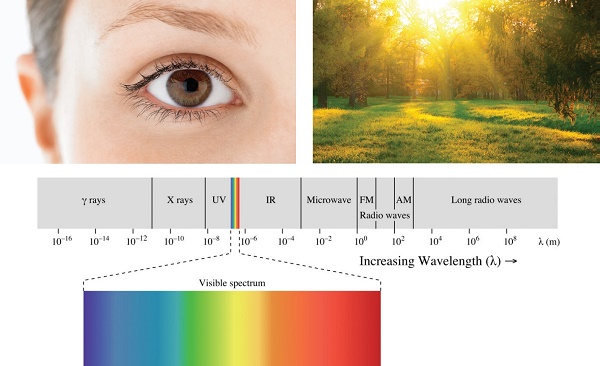
-Why do leaves change color in the fall?
There is no color in a vacuum. If there is an object without light, color cannot exist. Color is not an inherent property of any object, but is formed by light. Also, color is a kind of sensation formed in the brain through the eyes. In other words, color information is not a unique property of an object, but the result of a system such as specific wavelength component of light reflected from objects through recognizing in the human nervous system. Moreover, our eyes can only recognize the visible light spectrum. This means there is another area in the light reflecting from the object in a different way. For example, the world seen from ultraviolet cameras and infrared cameras is quite different from the world we can see. What we can see may not be true.
● You Can Find Color in Science!
-Why do leaves change color in the fall? 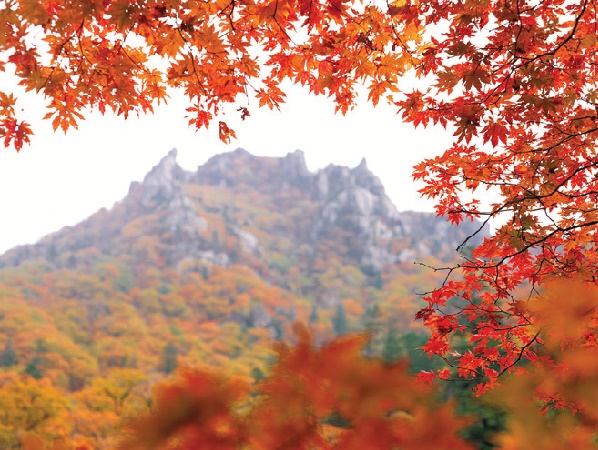
Leaves appear in various colors as changed weather wakes up the physiological system in the leaves of plants. The reason leaves have various colors is because different pigments are present in those leaves. As the temperature goes down, some of the carbohydrates and amino acid made by photosynthesis cannot move to the stem, so they are accumulated on the leaves and turn into pigments to change the leaves’ color. Red leaves occur when chlorophyll, a green pigment, decomposes. In this process, the red pigment, anthocyanin, is formed. Similarly, yellow leaves are formed by carotenoid pigments. At first, carotenoid pigments and chlorophyll were made and stored on leaves in spring. When chlorophyll decomposes in the autumn and the amount of carotenoid increases, the leaves’ color is changed from green to yellow. A brown leaf arises due to the tannin substances. In addition, as we can see leaves with various colors, the tannin substances and carotenoid pigments in the red leaves can produce leaves with various shades. In contrast, there is an evergreen, which doesn’t change its color throughout the seasons. An evergreen’s leaves are thick and tough to withstand the cold and dry seasons compared to the deciduous trees. Thus, it doesn’t need to change its color.
-The secret of a chameleon’s color
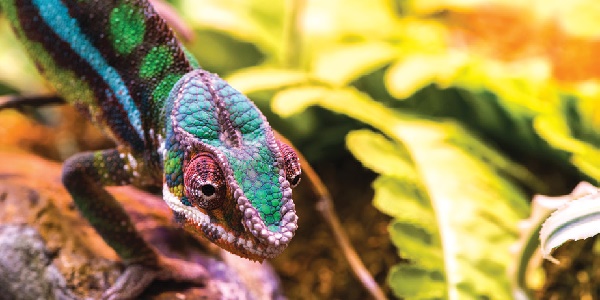
A chameleon is a fascinating animal as its skin can change its color again and again according to circumstance. This is a kind of protective coloration to protect them from enemies. Under a chameleon’s skin, there are myriad yellow, green, and brown pigment cells. The pigment cells called ‘Melanopolise’ can be light and dark when the cells shrink or inflate. Its color-turning system changes the color of the body depending on the degree of contraction of the cell. The process is controlled by the autonomic nervous system. In other words, changing the color of the body is one of the complex responses to different conditions. For example, a chameleon’s color can be changed according to ambient temperature and light intensity or emotional factors such as fear or triumph. Among them, light intensity has the most important role in that many kinds of chameleons also can get the effect of hiding the body resulting from the change in the color of the body.
● Color Using Our Mind

Didn’t you already hear about color therapy? Color therapy is about relieving stress and increasing vitality in life using color’s energy and character in medicine and psychotherapy. Recently, color therapy has been in the spotlight as a complementary and alternative medicine. Then, let’s see two types of color therapy and color’s effect. First, the coloring book is one of the most representative fields of color therapy. Immersion in coloring books brings anti-stress effects. From these effects, color therapy gained huge popularity in Korea. Second, color marketing is making color an important variable that increases the purchasing power of a product. A classic example of color marketing is Starbucks. Starbucks unified its overall brand image into green. It used the green color to emphasize an eco-friendly image for marketing because green means peace, safety, joy, and mildness. Finally, guess what color is effective and useful that we have to know? Blue and green are effective colors to ease stress. Blue can balance the metabolism and green can balance physical and mental factors. The reason why bluish colors are more comfortable than others is because a particular brainwave is vitalized when we see blue and green. Then, what color is effective for diet? People think the biggest factor to determine the flavor among five senses is the sense of taste. However, people taste not only because of the sense of taste but also because of lots of senses like sight, hearing, touch, and smell. Actually according to Junichi Nomura, the author of book The Secret of Color, when we taste something ‘sense of taste’ only effects 1% and ‘sense of sight’ effects 87%. In other words, people taste something due to the idea which they acquired through their eyes. In addition according to Junichi Nomura’s ‘Appetite Spectrum Research,’ red and orange seem to make bigger appetites than yellow and green. On the other hand, appetite falls dramatically with the colors of olive, blue, and violet. Recently, according to the University of Chicago in the U.S, under the same tablecloth color condition, people ate 21% more food when they ate from a red-colored plate than when they ate from white-colored plate. On the contrary, when the plate color was the same, people ate 10% more food when they ate on a red tablecloth than when they ate on a white tablecloth. Therefore, if you are on a diet, avoid red color.
● How Does the Meaning of Color Differ between Countries?
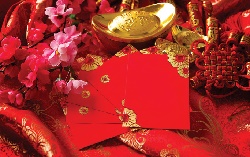
China: Chinese people’s favorite color is red. Red is believed to chase away the misery and make a lot of money. It is mainly used for gift envelopes. On the other hand, white refers to a negative sense. They think white means death. For example, a white color is always used for the villain role in Chinese opera. Also, when McDonalds entered the Chinese market for the first time, it took a long time to change the white-faced clown mascot.

USA: Americans like blue and red. As blue means truth and prosperity, it is often used in everyday life. For instance, in contrast with the Korean stock market, blue is used for rising stock prices. On the other hand, brown is regarded as a color avoided in the United States. It is a symbol of laziness.

Japan: Japanese prefer light colors to dark colors. These light colors mean integrity. In particular, white is the favorite color which symbolizes abstinence and tradition. In contrast with white, gaudy colors or leopard prints are the colors to avoid in Japan. Actually, when Benetton and Swatch released colorful and brilliant colors of products in Japan, they were not welcomed by Japanese people, who like the atmosphere of a clean image.
In addition, green is referred to as disease in jungle countries and cosmetics in France and the Netherlands. In Egypt, it cannot be used in packaging as it is the national color. Also, black, white, and purple are used as symbols of death or funerals in the Western, Eastern, and South American cultures.
● Color Is Right Next to Us!
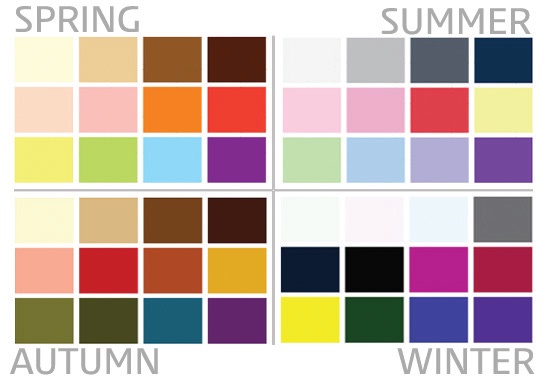
- Personal Color: Personal color means an individual color that harmonizes with one’s color of the body, making individuals more lively and energetic. Johannes Itten from Germany started four seasonal colors matching each season to a skin type and divided them into four broad groups. ‘Warm type’ is categorized as spring and autumn and ‘cool type’ is categorized as summer and winter. Skin tone is divided into warm type and cool type and the four seasons are divided into 12 types. Warm types are yellow and gold-centric colors while cool types are blue and gray-centric colors.

- The way to dress fashionably: There are two tips to dress fashionably considering color. First, avoid combinations of primary colors because the strong image of primary colors can be out of style. If the top and bottom color are a primary color, neutralize the color with a mono tone. Second, avoid combination of more than three colors. Combining more than three colors makes all colors point colors and can make one’s eye disperse, so the look seems out of style. Even if matching with a similar color or same color, give variety to material and texture.
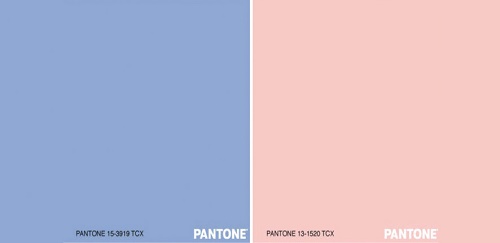
- Color of the year: Pantone is commonly known as an enterprise that names ‘Color of the year.’ Pantone mentioned ‘Radiant Orchid’ as the 2014 Color of the Year and ‘Marsala’ as 2015 Color of the Year. ‘Rose Quartz’ and ‘Serenity’ are the 2016 colors of the year. These colors became a trend in lots of fashion, beauty, and design. The reason why Rose Quartz and Serenity became colors of the year is that the sexual stereotypes about fashion and color have blurred. Also, social movements for gender equality and freedom of color have already been checked.
● Color of CBNU

The school color is an important material for delivering the visual image of a school along with the symbol mark and logotype. CBNU’s main colors are purple, jade green, and blue. Also, silver, gold, grass-green, bottle-green, and grey colors are used as sub colors. These colors are applied consistently to emblems, logos, and promotions to make highly attractive visual effects.
As we have seen colors used in a variety of areas before, we can think of color from various perspectives such as functions and psychology of color now. Also, we can broaden the view of color and get a more diverse feeling and inspiration. Then, why don’t you make your own color spectrum?

